Winter storms can leave you stranded far from home or stuck inside without power. This type of energy emergency may require you to seek help immediately. That’s when you turn to your trusty smartphone. Having one (or more) of these disaster relief mobile apps at the ready means you have the power in your hand – just a few clicks away.
FEMA Mobile App
 The Federal Emergency Management Agency (FEMA) has developed an impressive mobile app experience, which provides emergency preparedness tips for nearly any situation – from home fires to tsunamis. It also features a map of local disaster recovery shelters and a Disaster Reporter map. The Disaster Reporter map functions much the same as Lantern Live, where it relies on crowdsourcing to supply and share photos that illustrate critical information for first-responders and fellow citizens. You can download the free FEMA app for your Android or iPhone.
The Federal Emergency Management Agency (FEMA) has developed an impressive mobile app experience, which provides emergency preparedness tips for nearly any situation – from home fires to tsunamis. It also features a map of local disaster recovery shelters and a Disaster Reporter map. The Disaster Reporter map functions much the same as Lantern Live, where it relies on crowdsourcing to supply and share photos that illustrate critical information for first-responders and fellow citizens. You can download the free FEMA app for your Android or iPhone.
Lantern Live
 The Lantern Live app allows you to look up the nearest operational gas station, find fuel, and view power outage maps. Using the clout of crowdsourcing and open data, Lantern Live calls on the people of a disaster-stricken community to provide updates and pertinent details. You’ll find real-time pictures and comments depicting the severity of a flooded road, while also being able to view local power outages and read useful tips on how to safely handle an emergency. Lantern Live is free but currently available only for Android users.
The Lantern Live app allows you to look up the nearest operational gas station, find fuel, and view power outage maps. Using the clout of crowdsourcing and open data, Lantern Live calls on the people of a disaster-stricken community to provide updates and pertinent details. You’ll find real-time pictures and comments depicting the severity of a flooded road, while also being able to view local power outages and read useful tips on how to safely handle an emergency. Lantern Live is free but currently available only for Android users.
Red Cross Everyday Apps
First Aid, Blood, Flood, Tornado, Earthquake, Wildfire, Hurricane, Shelter Finder and Pet First Aid
 The Red Cross has a family of mobile apps, each focused on a different type of emergency situation. The Tornado App, for instance, provides step-by-step instructions of what to do even if the power is out and cell towers are down. You can also opt into push notifications to alert you when tornado warnings have expired, which is especially helpful when you have no power to watch local news. You can learn more and download any of the free Red Cross apps here.
The Red Cross has a family of mobile apps, each focused on a different type of emergency situation. The Tornado App, for instance, provides step-by-step instructions of what to do even if the power is out and cell towers are down. You can also opt into push notifications to alert you when tornado warnings have expired, which is especially helpful when you have no power to watch local news. You can learn more and download any of the free Red Cross apps here.
Winter Survival Kit
 Many people living in colder climates already have a survival kit packed in their car. If you don’t, this app provides a list of everything you need on hand in case of an emergency. On top of that, Winter Survival Kit will track your location should you get stranded in the middle of nowhere and need help contacting emergency services. The app’s Gas Calculator comes in handy by estimating how long you can run your engine with the fuel you have left in the tank. To help protect you from carbon monoxide poisoning, you’ll get an alert every 30 minutes to turn off your car and check the exhaust pipe for snow buildup. Get it free on iTunes.
Many people living in colder climates already have a survival kit packed in their car. If you don’t, this app provides a list of everything you need on hand in case of an emergency. On top of that, Winter Survival Kit will track your location should you get stranded in the middle of nowhere and need help contacting emergency services. The app’s Gas Calculator comes in handy by estimating how long you can run your engine with the fuel you have left in the tank. To help protect you from carbon monoxide poisoning, you’ll get an alert every 30 minutes to turn off your car and check the exhaust pipe for snow buildup. Get it free on iTunes.
Power Outage Alarm Pro
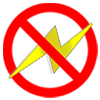 For those with second homes or week-long travel plans, Power Outage Alarm Pro is extremely useful. It notifies you via text message or audible alert if any electrical equipment suffers a power cut while you’re away from home. The most popular uses include monitoring a fridge/freezer, fish tank, sump pump and heating system. Power Outage offers simple peace of mind when you download it on your Android device for $3.99.
For those with second homes or week-long travel plans, Power Outage Alarm Pro is extremely useful. It notifies you via text message or audible alert if any electrical equipment suffers a power cut while you’re away from home. The most popular uses include monitoring a fridge/freezer, fish tank, sump pump and heating system. Power Outage offers simple peace of mind when you download it on your Android device for $3.99.
You can also check apps from local power companies, such as Ready Virginia and OCFL Alert. These serve very specific markets, but their growing popularity could bring more targeted assistance to an area near you.
See Also: Fall and Winter Energy Saving Tips


 We’ll do these in reverse order. This story should sound familiar to renters everywhere. You’re out of the house and you suddenly feel a sense of dread. You’ve left the hot plate on. Or, so you think. But there’s nothing you can do about it except leave wherever you are, go home, and check.
We’ll do these in reverse order. This story should sound familiar to renters everywhere. You’re out of the house and you suddenly feel a sense of dread. You’ve left the hot plate on. Or, so you think. But there’s nothing you can do about it except leave wherever you are, go home, and check. Ever get in the shower determined to duck in and out, using as little water as possible—only to hang around for minutes longer than necessary just because the gentle caress of the water is so lovely? I think all of us have probably had this experience.
Ever get in the shower determined to duck in and out, using as little water as possible—only to hang around for minutes longer than necessary just because the gentle caress of the water is so lovely? I think all of us have probably had this experience. This is another great idea for renters especially. You don’t want to invest in a full-out home security service, but you still want peace of mind.
This is another great idea for renters especially. You don’t want to invest in a full-out home security service, but you still want peace of mind.  This one is for the makeup lovers. You don’t need a makeup mirror that uses tons of incandescent light. The simplehuman
This one is for the makeup lovers. You don’t need a makeup mirror that uses tons of incandescent light. The simplehuman  This one happens to be our favorite because it even entertains us while saving us energy.
This one happens to be our favorite because it even entertains us while saving us energy.  According to Time Magazine, Nike has made soccer uniforms for both the U.S.
According to Time Magazine, Nike has made soccer uniforms for both the U.S.  That’s right. There’s an
That’s right. There’s an  It’s always a magical moment when caps fly through the air to commemorate the achievement of a hard-earned degree. But the next time your heart swells thinking about your family member’s upcoming commencement ceremony, allow it to swell an extra size or two,
It’s always a magical moment when caps fly through the air to commemorate the achievement of a hard-earned degree. But the next time your heart swells thinking about your family member’s upcoming commencement ceremony, allow it to swell an extra size or two,  You’d never believe what’s holding up some building in Norway. We’ll give you a hint: it’s black and white and read all over. No, it’s not a sunburned penguin; for one thing, you’ve got to work on your homophones. For another, sunburned penguins are unionized. Too expensive.
You’d never believe what’s holding up some building in Norway. We’ll give you a hint: it’s black and white and read all over. No, it’s not a sunburned penguin; for one thing, you’ve got to work on your homophones. For another, sunburned penguins are unionized. Too expensive. We know what you’re thinking. “Why would I want to brush my teeth with garbage?” We assure you, the
We know what you’re thinking. “Why would I want to brush my teeth with garbage?” We assure you, the 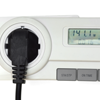
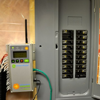
 For the second year in a row, Washington, D.C., took the top honor as the city with the most ENERGY STAR buildings for 2015. It was followed by Los Angeles and San Francisco. Atlanta and NYC rounded out the top five.
For the second year in a row, Washington, D.C., took the top honor as the city with the most ENERGY STAR buildings for 2015. It was followed by Los Angeles and San Francisco. Atlanta and NYC rounded out the top five. The ENERGY STAR survey ranked each city on the energy efficiency of its buildings. The top cities’ energy savings added up to millions of dollars, while also sparing the environment. The EPA claims that city buildings consume over two-thirds of the world’s energy, even while taking up just two percent of the global landmass.
The ENERGY STAR survey ranked each city on the energy efficiency of its buildings. The top cities’ energy savings added up to millions of dollars, while also sparing the environment. The EPA claims that city buildings consume over two-thirds of the world’s energy, even while taking up just two percent of the global landmass. By reducing emissions via energy efficiency, ENERGY STAR rated buildings have saved more than $3.8 billion since 1999. The EPA explains, it would take roughly 2.6 million homes to prevent the same amount of greenhouse gas emissions.
By reducing emissions via energy efficiency, ENERGY STAR rated buildings have saved more than $3.8 billion since 1999. The EPA explains, it would take roughly 2.6 million homes to prevent the same amount of greenhouse gas emissions. Energy efficiency in city buildings not only contributes to cleaner air and healthier communities, it also improves the economy. EPA Administrator Gina McCarthy explains, “Money saved on energy bills can boost the bottom line and be reinvested.”
Energy efficiency in city buildings not only contributes to cleaner air and healthier communities, it also improves the economy. EPA Administrator Gina McCarthy explains, “Money saved on energy bills can boost the bottom line and be reinvested.” It’s not just the major metro areas making an energy impact. Smaller cities are doing their part, too. San Jose, Honolulu, and Virginia Beach took top honors for mid-size cities. Midland, Texas, Sioux City, Iowa, and Martinsville, Virginia, were the top three small cities.
It’s not just the major metro areas making an energy impact. Smaller cities are doing their part, too. San Jose, Honolulu, and Virginia Beach took top honors for mid-size cities. Midland, Texas, Sioux City, Iowa, and Martinsville, Virginia, were the top three small cities. Your best choice depends on your budget, space, and to a lesser degree, your sense of style. Whether you search online or head to your local gardening shop, you should find a good selection available. Be careful to check the measurements of both the barrel and the space it will occupy. Prices typically start at more than $100. If cost is an issue, you can find directions for creating your own at
Your best choice depends on your budget, space, and to a lesser degree, your sense of style. Whether you search online or head to your local gardening shop, you should find a good selection available. Be careful to check the measurements of both the barrel and the space it will occupy. Prices typically start at more than $100. If cost is an issue, you can find directions for creating your own at  Since a typical summer rainstorm can easily fill most rain barrels and cause overflow, make sure you place yours in an area that can effectively drain water – without ruining your home’s foundation in the process. Some barrels have overflow spouts allowing you to direct the drainage.
Since a typical summer rainstorm can easily fill most rain barrels and cause overflow, make sure you place yours in an area that can effectively drain water – without ruining your home’s foundation in the process. Some barrels have overflow spouts allowing you to direct the drainage. The captured water needs to be easily accessible. In most cases, this will mean dunking a watering can into the barrel. If your barrel has a spigot, make sure a reasonably sized can will fit underneath the valve.
The captured water needs to be easily accessible. In most cases, this will mean dunking a watering can into the barrel. If your barrel has a spigot, make sure a reasonably sized can will fit underneath the valve. It’s important to have some type of screen closure covering the top of your rain barrel – preferably one that latches. The goal is to keep mosquitoes out and children safe. Don’t create an environment where mosquitoes can lay eggs, or children could endanger themselves. You’ll find
It’s important to have some type of screen closure covering the top of your rain barrel – preferably one that latches. The goal is to keep mosquitoes out and children safe. Don’t create an environment where mosquitoes can lay eggs, or children could endanger themselves. You’ll find  Even a little water collection is better than none. Returning groundwater to the ground – while bypassing our overworked sewage system – is a win-win for the environment and its inhabitants – especially those who like to flush their toilets frequently.
Even a little water collection is better than none. Returning groundwater to the ground – while bypassing our overworked sewage system – is a win-win for the environment and its inhabitants – especially those who like to flush their toilets frequently. Log onto
Log onto 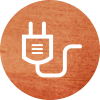 You can also learn more about their grassroots approach, Energy 2030. They’ll be visiting a total of 12 states throughout 2015/16 to drum up support for their energy policy recommendations. Energy 2030’s goal is to double energy production in the U.S. by 2030. Their mission also aims to lower energy costs, create jobs, lower imports, and reduce greenhouse gas emissions.
You can also learn more about their grassroots approach, Energy 2030. They’ll be visiting a total of 12 states throughout 2015/16 to drum up support for their energy policy recommendations. Energy 2030’s goal is to double energy production in the U.S. by 2030. Their mission also aims to lower energy costs, create jobs, lower imports, and reduce greenhouse gas emissions. The U.S. Department of Energy and the U.S. Environmental Protection Agency set strict guidelines for products to prevent greenhouse gas emissions.
The U.S. Department of Energy and the U.S. Environmental Protection Agency set strict guidelines for products to prevent greenhouse gas emissions. 

 DSIRE – a nationally-funded initiative at the N.C. Clean Energy Technology Center at N.C. State University – makes it easy to see what incentives are available in your particular state with an interactive map of the U.S. You click on your state, choose a program type and a technology, then a list of incentives appears. It also lists the latest policies that promote energy efficiency and renewable energy. Updated in real-time through database content, it’s the most comprehensive resource of this type of information in the nation.
DSIRE – a nationally-funded initiative at the N.C. Clean Energy Technology Center at N.C. State University – makes it easy to see what incentives are available in your particular state with an interactive map of the U.S. You click on your state, choose a program type and a technology, then a list of incentives appears. It also lists the latest policies that promote energy efficiency and renewable energy. Updated in real-time through database content, it’s the most comprehensive resource of this type of information in the nation. 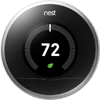 Nest takes programmable thermostats to a new level, according to the product’s website: it learns your heating and cooling habits after a few days, and then automatically adapts to those preferences to help you save energy.
Nest takes programmable thermostats to a new level, according to the product’s website: it learns your heating and cooling habits after a few days, and then automatically adapts to those preferences to help you save energy. Consumer Reports
Consumer Reports The Nest thermostat is one example of the increase in popularity of smart technology in programmable thermostats. With nearly half of your monthly energy bills coming from heating and cooling, there’s great potential to save money with these types of devices. The Nest may be one option worth your consideration.
The Nest thermostat is one example of the increase in popularity of smart technology in programmable thermostats. With nearly half of your monthly energy bills coming from heating and cooling, there’s great potential to save money with these types of devices. The Nest may be one option worth your consideration.